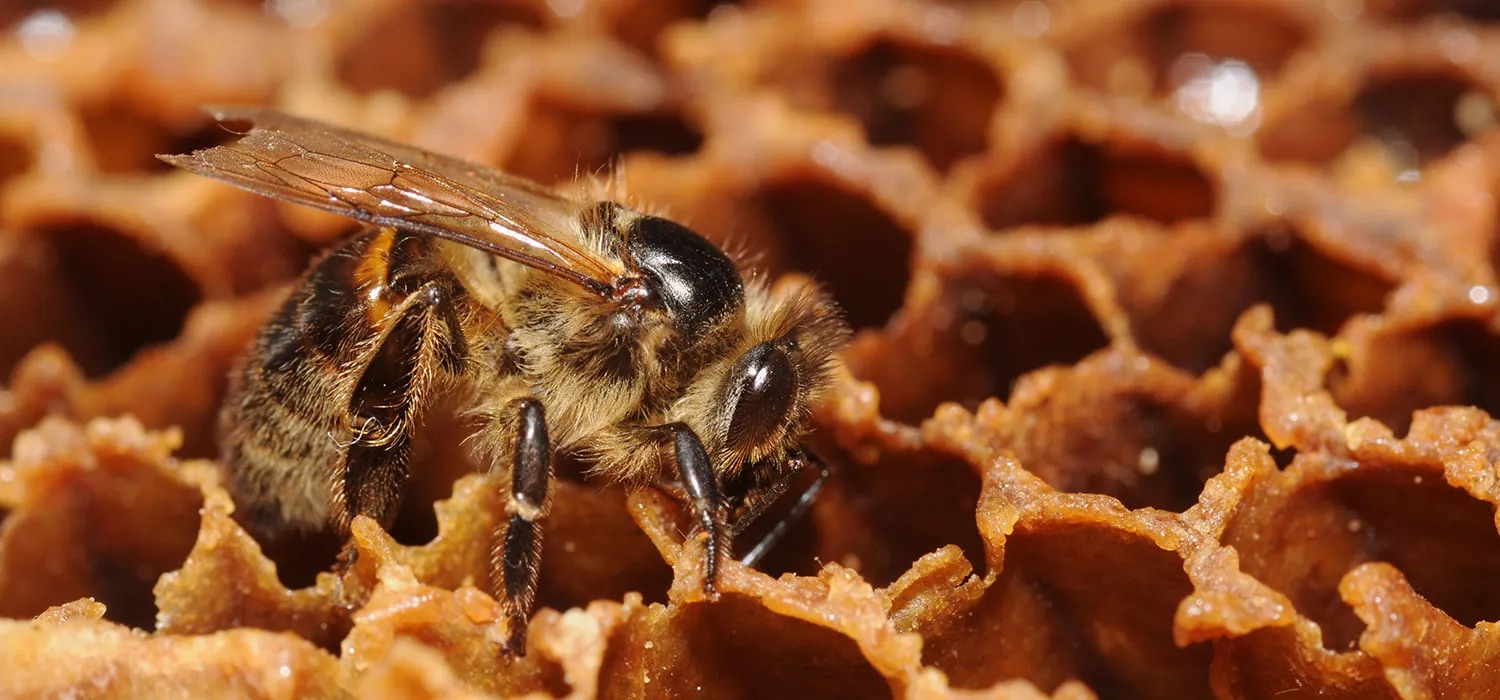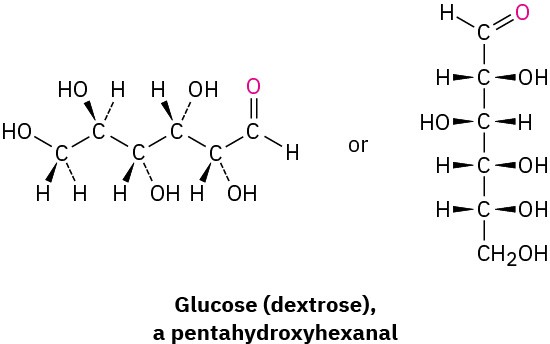25 Why This Chapter?

Figure 25.1 Produced by honeybees from the nectar of flowers, honey is primarily a mixture of the two simple sugars fructose and glucose. (credit: modification of work “Apis mellifera” by Thomas Bresson/Flickr, CC BY 2.0)
We’ve now seen all the common functional groups and reaction types that occur in organic and biological chemistry. In this and the next four chapters, we’ll focus on the major classes of biological molecules, beginning with a look at the structures and primary biological
functions of carbohydrates. Then, in Chapter 29, we’ll return to the subject to see how carbohydrates are both synthesized and degraded in organisms.
Carbohydrates occur in every living organism. The sugar and starch in food, and the cellulose in wood, paper, and cotton are nearly pure carbohydrates. Modified carbohydrates form part of the coating around living cells, other carbohydrates are part of the nucleic acids that carry our genetic information, and still others are used as medicines.
The word carbohydrate derives historically from the fact that glucose, the first simple carbohydrate to be obtained in pure form, has the molecular formula C6H12O6 and was originally thought to be a “hydrate of carbon, C6(H2O)6.” This view was soon abandoned, but the name persisted. Today, the term carbohydrate is used to refer loosely to the broad class of polyhydroxylated aldehydes and ketones commonly called sugars. Glucose, also known as dextrose in medical work, is the most familiar example.

Carbohydrates are synthesized by green plants during photosynthesis, a complex process in which sunlight provides the energy to convert CO2 and H2O into glucose plus oxygen.
Many molecules of glucose are then chemically linked for storage by the plant in the form of either cellulose or starch. It has been estimated that more than 50% of the dry weight of the earth’s biomass—all plants and animals—consists of glucose polymers. When eaten and metabolized, carbohydrates then provide animals with a source of readily available energy. Thus, carbohydrates act as the chemical intermediaries by which solar energy is stored and used to support life.

Because humans and most other mammals lack the enzymes needed for digestion of cellulose, they require starch as their dietary source of carbohydrates. Grazing animals such as cows, however, have microorganisms in their first stomach that are able to digest cellulose. The energy stored in cellulose is thus moved up the biological food chain when these ruminant animals eat grass and are themselves used for food.

